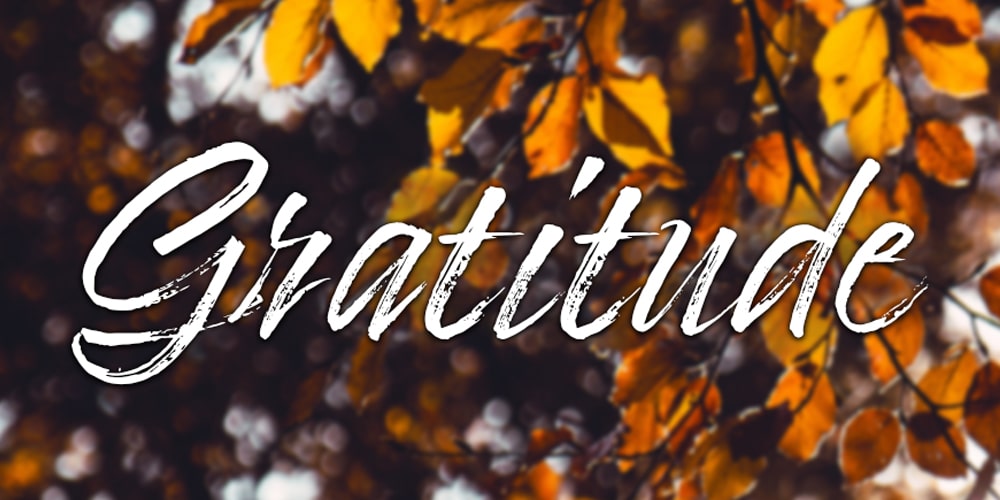Cultivating Gratitude at Jesus’s Feet

November is practically synonymous with gratitude and thanksgiving. The entire month is filled with turkeys, cornucopias, and images of abundance. In the United States, we even hold an official nationwide feast day on the fourth Thursday of November, joining with friends and family to give thanks.
But the tradition of autumn thanks goes back much farther than our young country’s history. Since ancient time, in nearly every corner of the globe, when the harvest was complete the people celebrated. The crops are stored, the work to prepare for winter is done. There is enough. We will survive for another year and we are thankful. There was nothing shallow about this cry of gratitude either, for survival was nothing to be taken for granted—not every precious life would survive the winter.
Today, my daily survival doesn’t lean so directly on agricultural ebbs and flows, or my ability to store summer’s bounty in the basement; yet the tradition of autumn thankfulness remains. Gratitude calendars, harvest decorations, and Thanksgiving recipes abound, all to remind us of the truth: It is good to set aside time at the end of things to be thankful.
But here is my confession: Abundant though my life is, I struggle to be grateful in November. I’m running down the block between my warm house and my frozen car, aching hands wrapped in mittens, darting between drops of freezing rain. Darkness falls hard and fast, right in the middle of the afternoon, settling in for a long stay. All I love most—warmth, light, life—seems to be nearing to an abrupt close.
I don’t want to see it go. I struggle to be thankful at the end because I do not want the end to come.
Yet I hear the words and see the invitation all around me: Grateful. Grateful. Grateful.
Earlier today I read the story of the ten men with leprosy (Luke 17). As Jesus walked from Galilee to Jerusalem, they saw Him and—keeping their distance as they must—began to shout: Jesus! Master! Have mercy and heal us!
Jesus heard them and sent them off to show the priest that they were healed. And amazingly, as they went, they were healed.
I can’t imagine what this moment was like. I don’t say this euphemistically: I literally mean I cannot imagine it. Did their aching skin suddenly smooth and calm? Did long-lost limbs grow back as they walked?
However this healing went down, it must have been dramatic for they knew they were healed. I imagine they were too taken aback to know what to do. But one of them—just one of the ten—came back to Jesus. Only the Samaritan. Praising God “in a loud voice” he threw himself at Jesus’s feet and said, “thank you.”
Thank you.
Given my feelings about November, I think it’s safe to number myself among the nine who forget to come back and give thanks. I haven’t been healed from leprosy, granted, but really my only complaint in November is the dark and cold—and that’s enough to take my eyes off of gratitude. Instead of focusing on all I have, I worry about what I lack.
The season to come is dark and cold; it’s true. We will scrape windshields, shovel snow, and turn on lights at 4 p.m. for months before new life returns. But return it will—and there is beauty and rest awaiting us in the meantime.
So today, this November, will you come with me and throw yourself at Jesus’s feet? I don’t know your struggles or your joys, but I am confident life has dealt you a long list of both. Will you bring it all—wounds and fears and joys and healing—and open your hands and say:
Thank you. Thank you, thank you, thank you.
